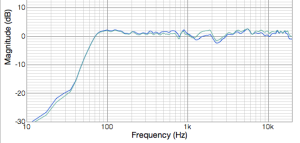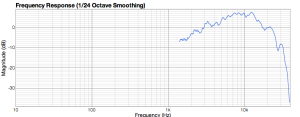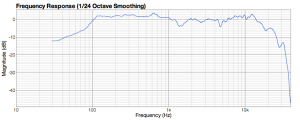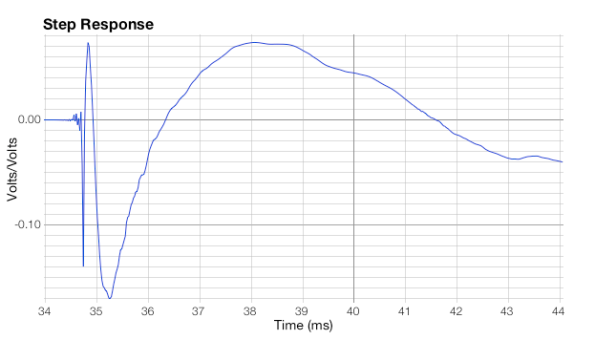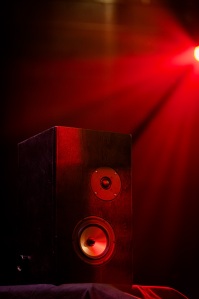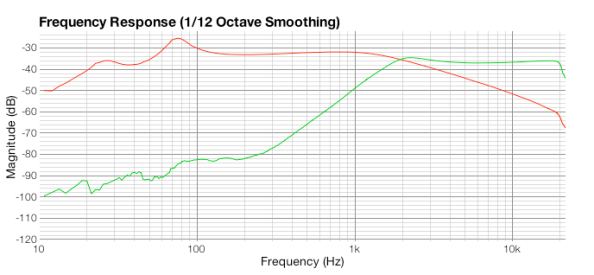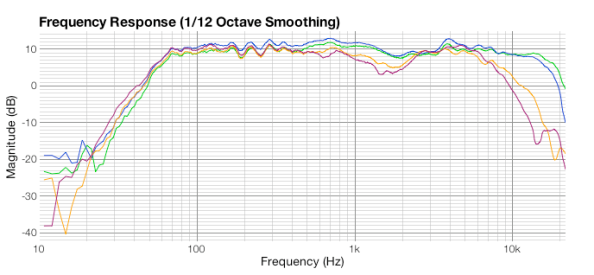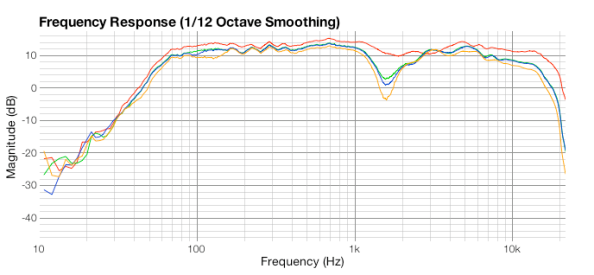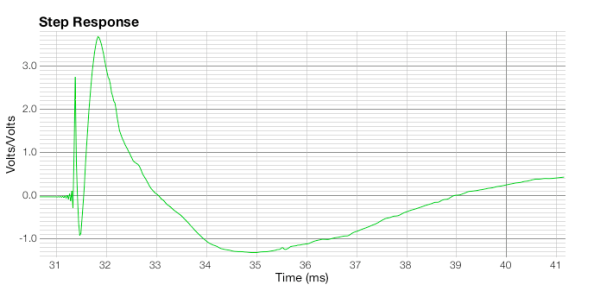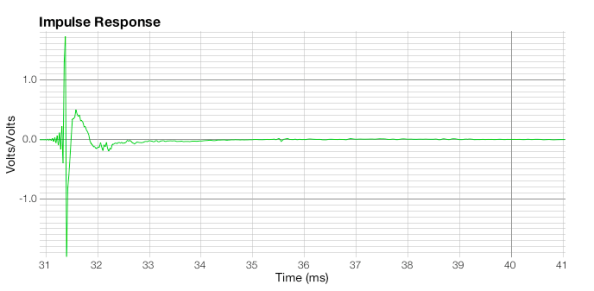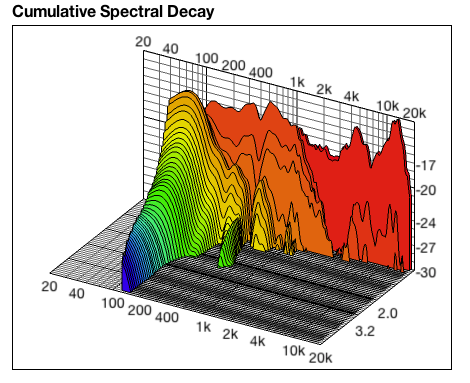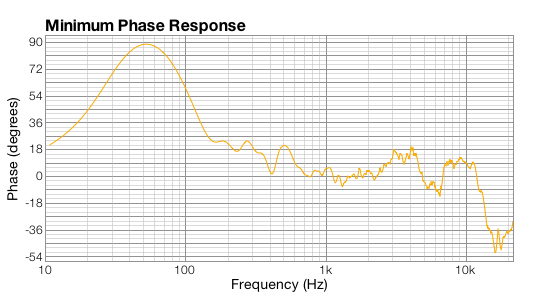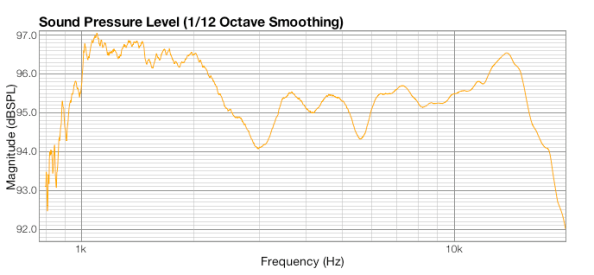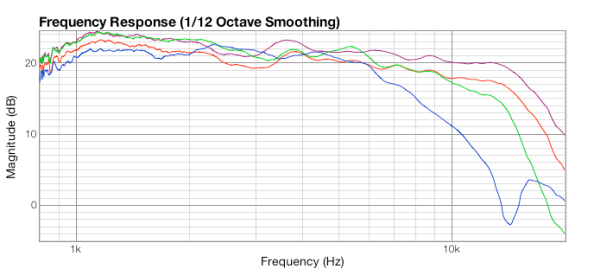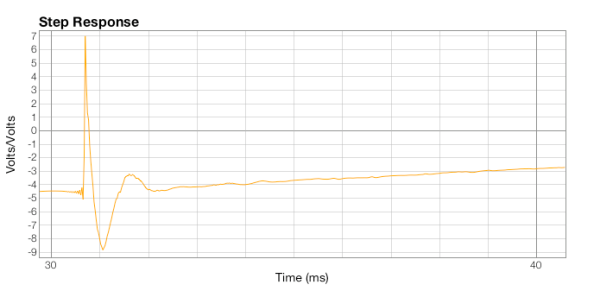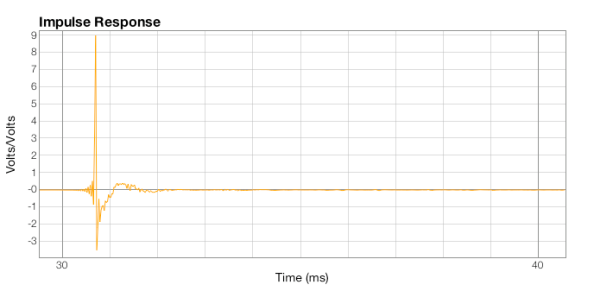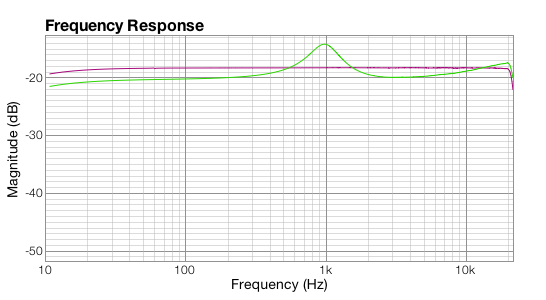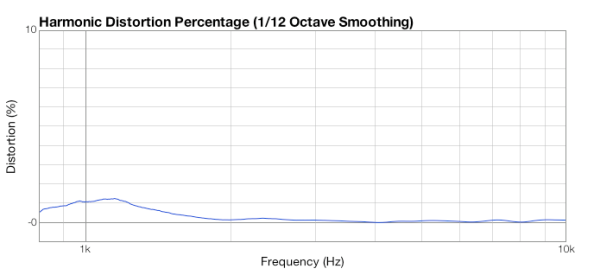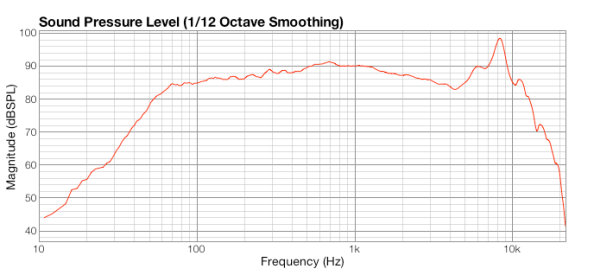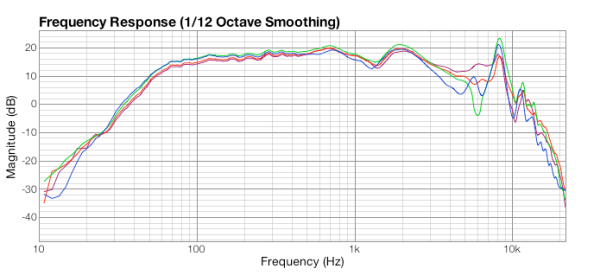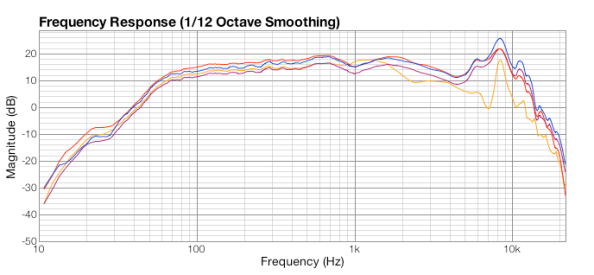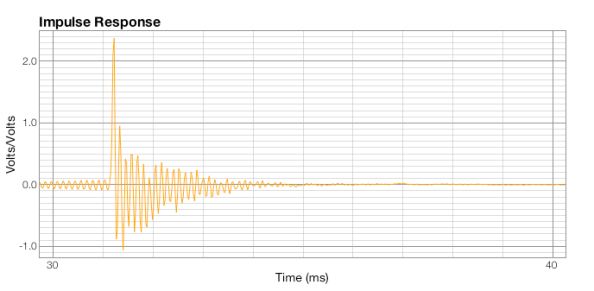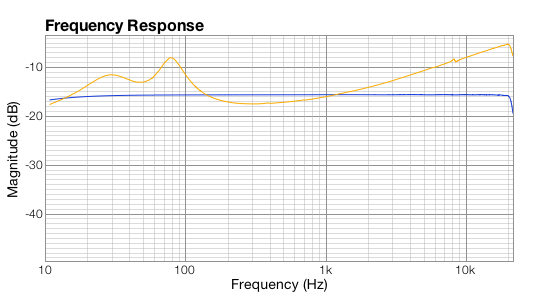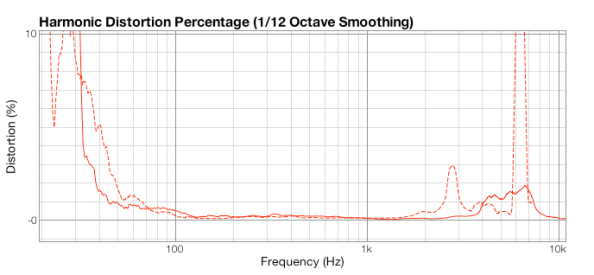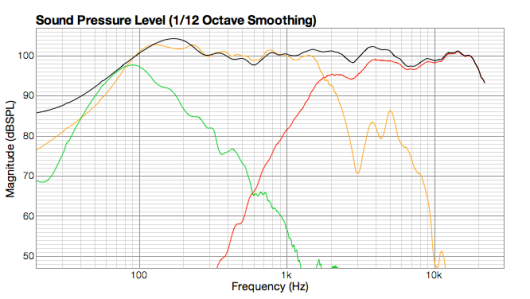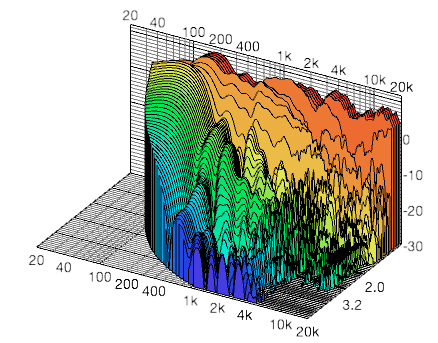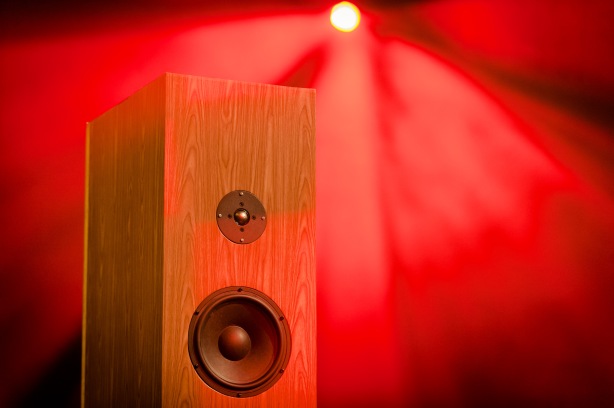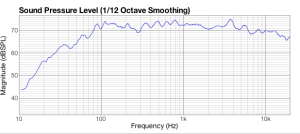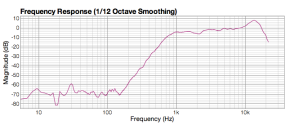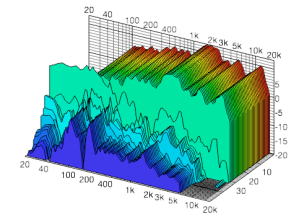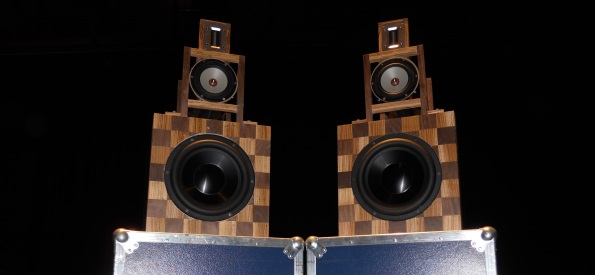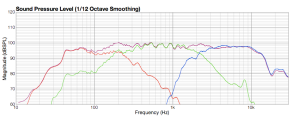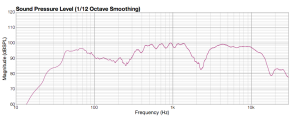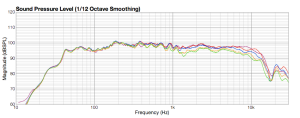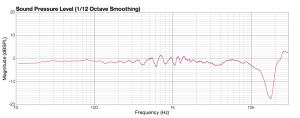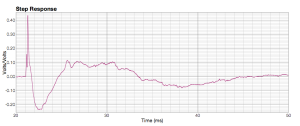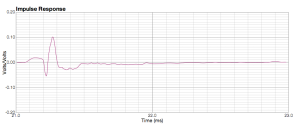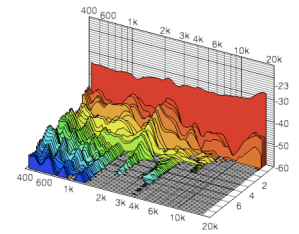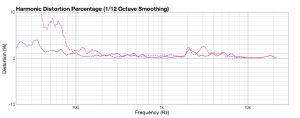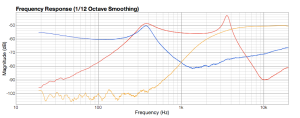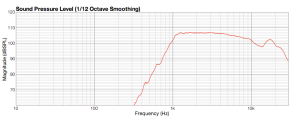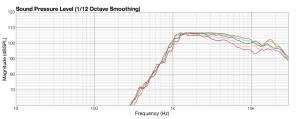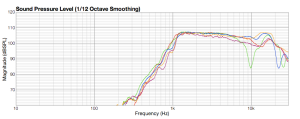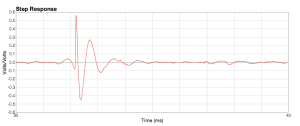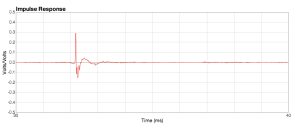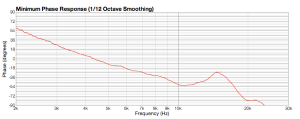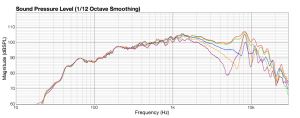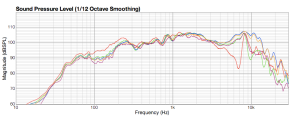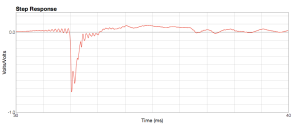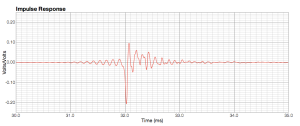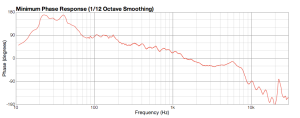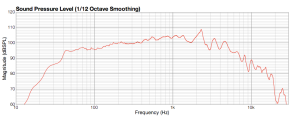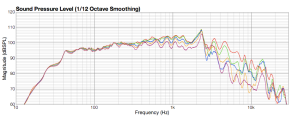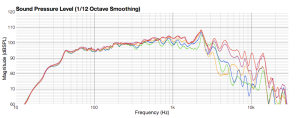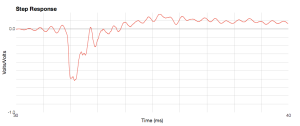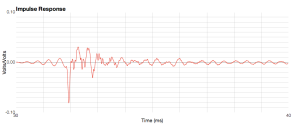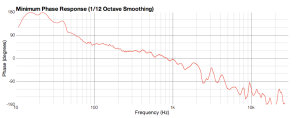Archive
Ignis Series 1
Designed, Built, and Tuned by Jonathan Moths
Design Goals:
- Small size for desktop use
- Low cost ($400-500)
- Primary use is listening for pleasure
- Maximize bass extension despite small size
Features:
- 1″ diameter side port to enhance bass extension
- Portability and small size (9 1/2″ x 9 1/4″ x 1’2″)
- +/- 2 dB from 70 Hz to 20 KHz
- F3 of 60 Hz
- Metal Dome Tweeter
Drivers:
- SB Acoustics SB26ADC-C000-4 Metal Dome Tweeter
- SB Acoustics SBMFC35-4 6 inch Poly Cone Woofer
Documentation:
MonoChromes
//Features.
- Vented box
- Bookshelf speakers only 10″ x 14″ x 14″
- 1.5 inch thick MDF exterior
- 2nd Order Crossover
- Cost Efficient (around $260 as they are, about $320 with final crossover)
//Materials.
- Box is made solely out of two layers of 3/4″ MDF
- Banana terminals
- Adjustable port
//Drivers.
- Woofer: Dayton Audio DS175-8 6-1/2″ Designer Series Woofer
- Tweeter: Dayton Audio RS28F-4 1-1/8″ Silk Dome Tweeter
//Tweeter Response
//Woofer Response
//Response Combined
arbor.
DESIGN + CONSTRUCTION.
Chelsea Leighton
GOALS.
+Bookshelf size for small-room use
+Flat frequency response
+Solid transient handling
+Relatively low frequency extension
+Stable, accurate stereo image
+Within $800.00 budget
DRIVERS.
+Tweeter: Seas Prestige 27TDFNC/GW
+Woofer: Vifa P17WJ-00-08
MATERIALS.
+Inner Box: 3/4″ European Birch, 13-ply
+Mechanical Dampener: 1/8″ Loaded Vinyl
+Outer Box: 1/2″ Rotary Red Oak
DOCUMENTS.
+CONSTRUCTION IMAGES
+DESIGN STATEMENT
+DRAFTING
+GLOSSY
+TESTING & TUNING REPORT
TESTING RESULTS.
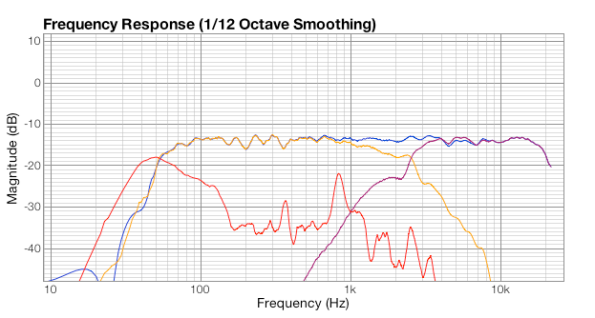
Frequency response of overall system (blue), tweeter (purple), woofer (yellow), and corrected port (red).
arbor. by Chelsea Leighton is licensed under a Creative Commons Attribution-NonCommercial-ShareAlike 3.0 Unported License.
Epimetheus
Overview:
I set out to create critical listening speakers that will be enjoyable in any room you put them in. This was accomplished by creating a floor standing pair of speakers with great off axis response to make the largest “sweet spot” to fully enjoy your music. I believe speakers should be flexible enough to be an afterthought when you are relaxing to your favorite music.
Epimetheus utilizes a passive 2.5-way crossover design which means, compared to a 2-way crossover, there is an additional woofer that handles only the bass frequency.
Features:
+/- 2 dB from 70 to 17k Hz
Great Off Axis Response
Under $800
Floor standing
F3: 60 Hz
Drivers:
Tweeter: The Morel MDT29 was selected for it’s good off axis performance, and low frequency extension that allows it to be crossed over around 1800 Hz
Woofer: The Seas L16RN-SL was selected because its Q(tc) indicated it was suited for a sealed box, plus it has good low frequency extension for its size.
Documentation:
Testing Results:
Full Range
Full Range, Mid Woofer Inverted
Horizontal Off Axis Response
Vertical Off Axis Response
Harmonic Distortion:
Step Response:
Impulse Response:
Minimum Phase Response:
Waterfall:
Tweeter Response:
Woofer Response:
Epimetheus by Russell Goddard is licensed under a Creative Commons Attribution-NonCommercial-ShareAlike 3.0 Unported License.
MT1
Over View
These speakers are designed for film and for fun! Keeping aesthetics as the main design goal, their main purpose is for cinema and for the ocasional house party. This led to important design goals that I wanted to keep different then any previous students. This included an acrylic baffle, a visible crossover so that you can see the inner workings of the speaker, and to top it off, LEDs to give it a little more sparkle. The acoustical properties that were my main goals were to have the capability of a wide dynamic range and an extended frequency range through the use of a transmission line.
Features
– 3 Way
– Passive Cross over
– 13 Foot Transmission Line
– Acrylic Baffles
– Interior LEDs
 Cabinet
Cabinet
– 5′ 4″
– 2′ x 2′ Base
– 350 lb Each
– 3/4″ MDF interior
– 3/4″ Red Oak Exterior
Drivers
– Tang Band RT-1516SA Ribbon Tweeters
– 3″ Tang Band 75-1558SE Dome Drivers’
– 12″ TC Sound Epics
Coast
~ $3500
Documents

This work is licensed under a Creative Commons Attribution-ShareAlike 3.0 Unported License.
Testing Results
Frequency Response
Horizontal Off Axis
Vertical Off Axis
Left/Right Difference
Tweeter
Frequency responce
Horizontal off axis
Vertical off axis
Impulse Response
Phase
Midrange
Frequency Response
Horizontal Off Axis
Vertical off axis
Impulse Respose
Phase
Sub
Frequency Response
GDX2
Overview
This 2-way desktop/bookshelf stereo pair was designed to be used for general music listening, as well as mixing. With a ported cabinet, this system has an F3 of around 80 Hz, giving a good representation of bass frequencies without necessarily needing a subwoofer, though one can be used for added fullness. Designed on a budget, this pair cost just under $500, giving high performance at a relatively low cost.
Goals:
- Small size for desktop use, as well as portability.
- Low frequency extension.
- Flat frequency response.
- Budget of $500.
Features:
- 2-way system.
- Passive crossovers.
- Ported cabinet for low frequency extension.
- Flat response curve (variation of 1.5 dB.)
Cabinet:
- 3/4″ 11-ply birch exterior.
- 1/2″ MDF interior.
Drivers:
- SEAS Prestige h1141 5.5″ aluminum cone woofer.
- SEAS Prestige h1211 1″ textile dome tweeter.
Documentation:
Testing Results:
Overall
Frequency Response Curve
Inverted Polarity on Tweeter
Crossover Filter Response
Horizontal Off-Axis Response
Vertical Off-Axis Response
Step Response
Impulse Response
Minimum Phase Plot
Tweeter
Frequency Response
Horizontal Off-Axis
Vertical Off-Axis Response
Tweeter Left/Right Difference
Step Response
Tweeter Impedance
Harmonic Distorion
Woofer
Woofer Frequency Response
Horizontal Off-Axis Response
Vertical Off-Axis Response
Woofer Left/Right Difference
Impulse Response
Woofer Impedance

GDX2 by Grant Prusi is licensed under a Creative Commons Attribution-ShareAlike 3.0 Unported License.
Diamond Series
This 2.5-way pair of loudspeakers is designed for home theater use. The design includes four Aura 6″ woofers and a 1″ ScanSpeak tweeter. The speakers are vented with ports on the back diagonal sides, and have a passive crossover.
Design Goals
- Cost around $500.
- Good low frequency extension.
- Produce 105 SPL (THX standards).
- Low power requirements.
Key Features
- 2.5-way system
- passive crossover
- vented system
- f3 of 40hz
- bandwidth of +/- 3 dB
Drivers
Aura NS6-255-8A 6″ Woofer
ScanSpeak D2608/9130 1″ Textile Dome Tweeter
Cabinet
Walls are 2 layers with:
3/4″ Birch plywood, 3/4″ MDF
Documents
Performance Graphs
Diamond Series Driver Summation (Black-Full, Red-Tweeter, Yellow-Mid, Green-Low)
Diamond Series System Decay
Diamond Series Left-Right Speaker Difference
DKS 800
Design Goals
-Full extended frequency response
-Evenness in frequency
-Balance in frequency
Drivers
-Tweeter Audax TW025A8
-Woofer: Silver Flute 8 Wool cone 4 ohm
Materials
-1/4″ MDF
-3/4″ OSB plywood
Documents:
DKS 800 by Daniel Serunjogi is licensed under a Creative Commons Attribution-NonCommercial-ShareAlike 3.0 Unported License.
Project Bacchus – Tim DeYoung
Introduction
Have you ever been in wonder of what music is? The fact that we as a species can convey story and emotion through a combination of simple tones and rhythms. For when you get down to it, that is exactly what music is, emotion. Sadly though, this is the one main thing missing in most speaker systems, the ability to convey emotion. A speaker that has a flat frequency response or a short impulse is fine and dandy, but when they can’t convey the emotion of the music you are listening to, they are down right useless.
That is why I designed “Project Bacchus”, I have always had an extreme connection with the music around me, and to not only own but to create with my hands a speaker system that enables me to connect with music on an emotional level, that is one of life’s necessities, because what is the point of being in a world full of music when you can’t connect with it?
Design Basics
For the design of “Project Bacchus” I took a lot of inspiration from speaker designers such as Richard Vandersteen and Jim Thiel who preach the gospel of time and phase coherence. Which is when you arrange the acoustical centers of your drivers in the vertical space so that they align in not only time but also phase, which is very difficult to do but when done correctly can be very rewarding.
Design Choices
One of the best ways to give speakers life, is to make sure that they produce a large sound stage. I went about trying to open the stage by doing three things:
1.) 3-Way
I chose to produce a three way system so that all of the frequencies in the spectrum are recreated without struggle. Too many times I see two way systems with large woofers. In order to use a tweeter effectively, it has to cross over around a minimum of 1kHz, so that means the woofer is also producing up to 1kHz, and depending on the crossover order sometimes even three to four octaves above that, which means up to 8kHz! and a woofer any bigger than 2″ can not accurately produce that high of a frequency.
To alleviate this I used three drivers, each of which only producing frequencies which it is comfortable and effective at. This means a 10″ subwoofer which gets crossed over at 200Hz, a 5.5″ woofer which gets crossed over at 2kHz, and a tweeter which is also crossed over at 2kHz.
2.) Stereo Subwoofers
Another design choice I made to try and help widen the sound stage a bit was to have a dedicated subwoofer on both the left and right channel. Because even though low frequencies are mostly omni-directional, the human ears can still distinguish between sources, and having both sources there really helps widen and smooth out the stereo field.
3.) Minimal Baffles
With project Bacchus, I really wanted to open up the sound stage to maximize the listening experience. To do this I committed to having the smallest baffle sizes possible, this will eliminate one of the main reasons why some speakers tend to sound constrained from left to right. To minimize the baffle size, I mounted the tweeter without a box, and I mounted the midrange in a tube which is only a total of half an inch larger in diameter than the driver it houses.
Subwoofer Design
The things which I really enjoy in a subwoofer are tightness and accuracy. Every time I have been really impressed with a subwoofer it has had those two characteristics, the support of the lowest octave isn’t that high on my priority list. To achieve this, I ended up putting my subwoofer in a sealed box, this gave the benefits of transient accuracy, and tightness which I really appreciate in a low end driver.
Woofer Design Choices
Boxes are boring, there are too many boxes out there in the world, and there are too many boxes in my design portfolio. So I decided to go with something I have never even wrapped my head around until this year, and that is a transmission line. For this concept I’ve taken a lot of inspiration from B&W speakers, where their enclousure behind their drivers gradually tappers down to nothing. The thought process behind this is to take all of the energy radiating of the rear of the driver and take it as far away as you can, the hope being that it never returns to the driver to cause distortion and cancelation.
Since I don’t have plastic injection molding machines and my ready (hopefully someday right next to my CNC routing table), I had to improvise. After many hours at the hardware store looking over my options, I picked one, a furnace vent. This vent allows me to get an approximately two foot long tube filled with sound absorption material behind my woofer, which very effectively takes the sound and has it never return.
As a side note: I don’t know if it is me trying to hear it or if it is actually there, but I think that I can hear the tube, but it isn’t on all songs which is weird.
Tweeter Design
I knew from the beginning that I wanted to use a ribbon tweeter, I have never heard a system which utilized them which I haven’t enjoyed. I also knew that to maximize the horizontal dispersion and high-end sparkle which ribbon tweeters are known for, I wanted to minimize the size of the baffle.
End Notes
I REALLY like my speakers, but they are not for everyone. In fact, I think I might have tailored them too much to my specific wants. I very much like mellow sound, even when I mix I try to get a super mellow sounding mix. So I wanted to make listening speakers that suited my tastes, and I really succeeded. When I put on a well recorded jazz ballad, these things sing, and I can feel myself being sucked into the music. But when I put on a pop/punk song on (I don’t know when I would, but we will speak in hypotheticals), my speakers really tend to suck the energy out of the song, which could be very bad for a lot of people.
One of the aspects of my speakers which I like the best, is how far they sit back in the room. They sound like they are coming from almost ten feet behind where they are standing, which really helps them to blend in to the room, which is one of the key aspects of good listening speakers.
They are also very smooth, it is not the stereotypical “accurate” sound (like dead studio mixing speakers), but instead they just sound like everything flows together, I feel like my speakers really blend voices well within the mix.
Files
Design Statement
Enclousure Drafting
Crossover Schematic
Crossover Schematic_Tim DeYoung
Final Testing Report
Testing Results
Frequency Response
Minimum Phase
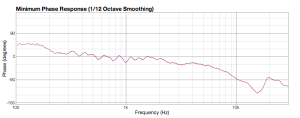 Harmonic Distortion @ 96dB SPL
Harmonic Distortion @ 96dB SPL
Crossover Response
Tweeter Measurements
Frequency Response
Midrange Measuremets
Subwoofer Measurements
If you have any questions, feel free to e-mail me: tsdeyoun@mtu.edu

